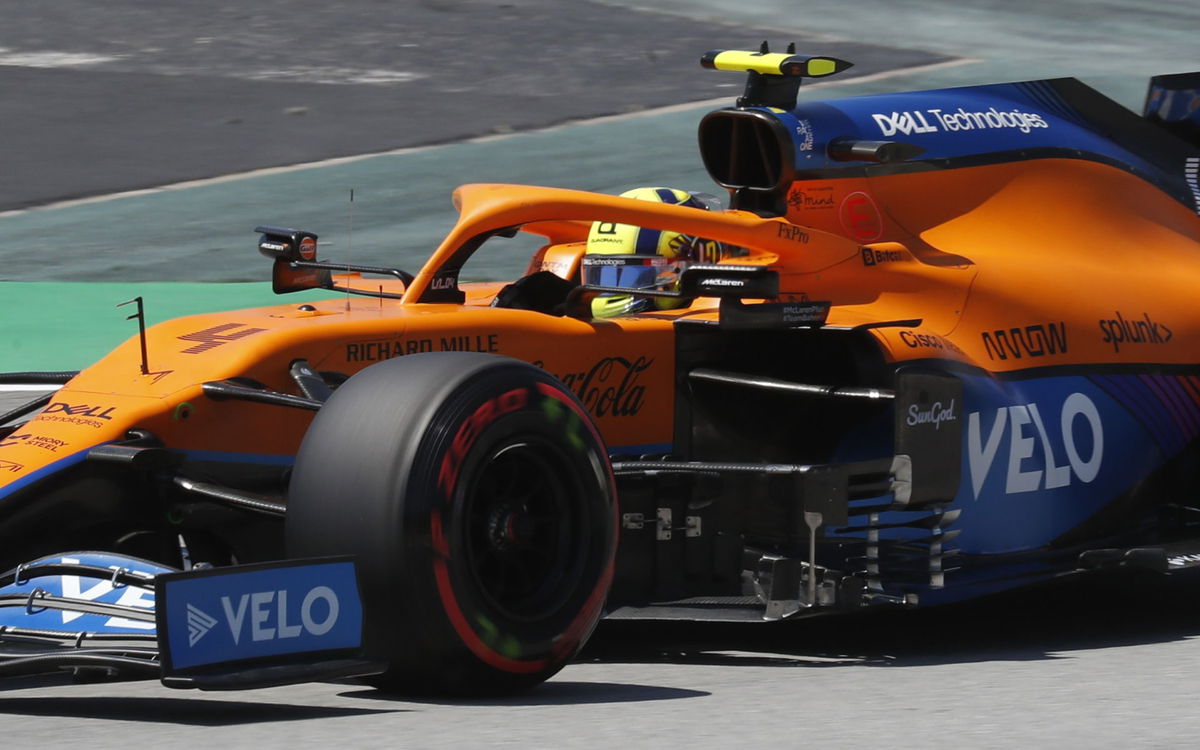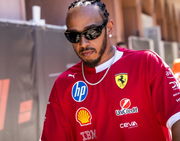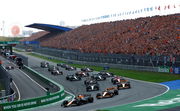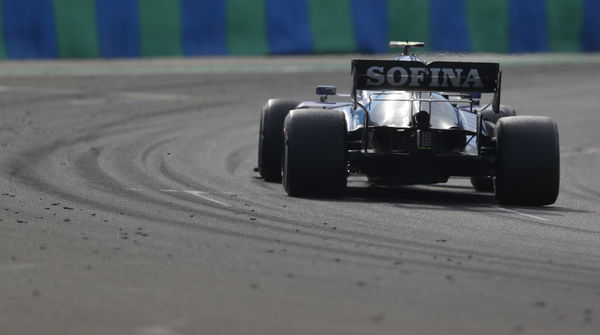
Reuters
Formula One F1 – Spanish Grand Prix – Circuit de Barcelona-Catalunya, Barcelona, Spain – May 8, 2021 McLaren’s Lando Norris in action during practice Pool via REUTERS/Nacho Doce

Reuters
Formula One F1 – Spanish Grand Prix – Circuit de Barcelona-Catalunya, Barcelona, Spain – May 8, 2021 McLaren’s Lando Norris in action during practice Pool via REUTERS/Nacho Doce
The basis of race strategy, the rate of tire wear, can make or break an F1 race. A recent, popular example of a broken race would be Valtteri Bottas’ 2021 French GP. Bottas was furious at the one-stop strategy which cost him a chance at victory. The tire wear caused the Finn to lose grip on the track, slowing him down.
Watch What’s Trending Now!
Therefore, tire wear is a crucial variable in the race. It is also highly dependent on track temperatures; the surface temperature of the track dictates how hot the tires will get, which will affect the grip and degradation rate.
Read More: Mattia Binotto Fails to Hide His Disappointment With Ferrari F1 Juniors
ADVERTISEMENT
An extremely technical aspect of the race, the rate of tire degradation decides compounds, pit stops, team orders; so it’s important to understand why tires wear at the rate they do.
Understanding F1 tires
The Pirelli tires are built for performance rather than longevity. The tires complement the high-speed, extreme performance the sports calls for, which results in the rubber wearing off
ADVERTISEMENT
The synthetic rubber used in F1 tires heats because of friction. The heat is usually higher in the corners of the track because of the excessive force on the tires.
The tire is the only part of the car in contact with the tarmac; all the power in the chassis needs to get translated into speed – provided by finding a grip on the tires. The working temperature of the tires helps make the tire just right for racing – the heat making it softer over the rough surface of the track, giving the car a better grip.
ADVERTISEMENT
ADVERTISEMENT
The heat on the rubber changes it at a molecular level, hence fresh tires are usually softer and more sticky -providing better grip, while the used tires lose the softness, providing less grip and are therefore less useful. This happens over the course of the tire ‘lifespan,’ which is more or less 50 laps, depending on the compound used.
Top Stories
Lewis Hamilton’s $100M Annual Salary to Keep Him From Retiring Soon at Ferrari: Reports

Mercedes Faces F1 Uproar as Toto Wolff’s Team Nears Clean Chit on ‘Illegal’ Engine

Who Is Canadian F1 Billionaire Lawrence Stroll’s Daughter & Heiress Chloe Stroll?

“Have Some Shame”- Fans Tear Apart F1 Pundits’ Shocking 2025 Driver Ranking

Max Verstappen’s Siblings: Everything We Know About Victoria, Blue Jaye, Jason Jaxx, and Mila Faye

If the tire overheats, the inside of the rubber is hotter than the outside. This forms a hot pocket of air between the two layers, and it expands till a small part of the tire falls out of the outer surface. This is blistering, and tire management on the driver’s part plays a massive role in controlling it. It’s easy to spot from the board camera during the race as an uneven patch on the tire.

Reuters
Formula One F1 – British Grand Prix – Silverstone Circuit, Silverstone, Britain – July 18, 2021 Williams’ George Russell during the race REUTERS/Peter Cziborra
If the situation is reversed and the outside surface is hotter than the inside, lateral forces in the corners of the circuits will cause the outside to tear off into small pieces. This is because of the heat, speed, and external force. Usually sticky, the torn bits stick to the surface of the tires, giving them a grainy look. Hence, called graining. The chunks that fall off are called marbles.
ADVERTISEMENT
Tire wear
All the above phenomena are aspects of tires. As mentioned, the lifespan of the tire is around 50 laps. This is because track temperature affects how hot the tires will get, which dictates the grip level and degradation rate.
ADVERTISEMENT
This narrow operating window, the perfect temperature, is when the tires are at the peak of their performance. Drivers have a good grip and can maneuver the track considerably well. Driving at a level below this sweet spot results in underperformance, no grip, and exceeding it can cause performance to drop and increase tire wear.

Reuters
Formula One F1 – Hungarian Grand Prix – Hungaroring, Budapest, Hungary – August 1, 2021 Williams’ Nicholas Latifi in action REUTERS/David W Cerny
Tire wear also affects lap time, slowing the car down by tenths of a second. This may seem small, but over the course of the race, it can add up to decide who wins and who misses.
ADVERTISEMENT
Additionally, front and rear tires degrade at different rates. They don’t operate at the same temperature and are affected differently by the track.

Reuters
Formula One F1 – British Grand Prix – Silverstone Circuit, Silverstone, Britain – July 16, 2021 Mercedes’ Lewis Hamilton celebrates after finishing first in the sprint race qualifying REUTERS/Peter Cziborra
However, drivers have some sort of control over how fast or slow their tires wear. If they want to increase the tire temperatures, they push harder, softening the tires and increasing grip. If the wear is too much, teams will instruct the drivers to reduce the pace to manage the tires better and increase their lifespan.
ADVERTISEMENT
Watch this story: Lewis Hamilton’s Biggest F1 Crashes
Therefore, hot locations, high-speed corners, and tire management are all important aspects of the race. It affects team strategies, the completion on the track and can also be the difference between a DNF and a race win.
ADVERTISEMENT
ADVERTISEMENT
ADVERTISEMENT

